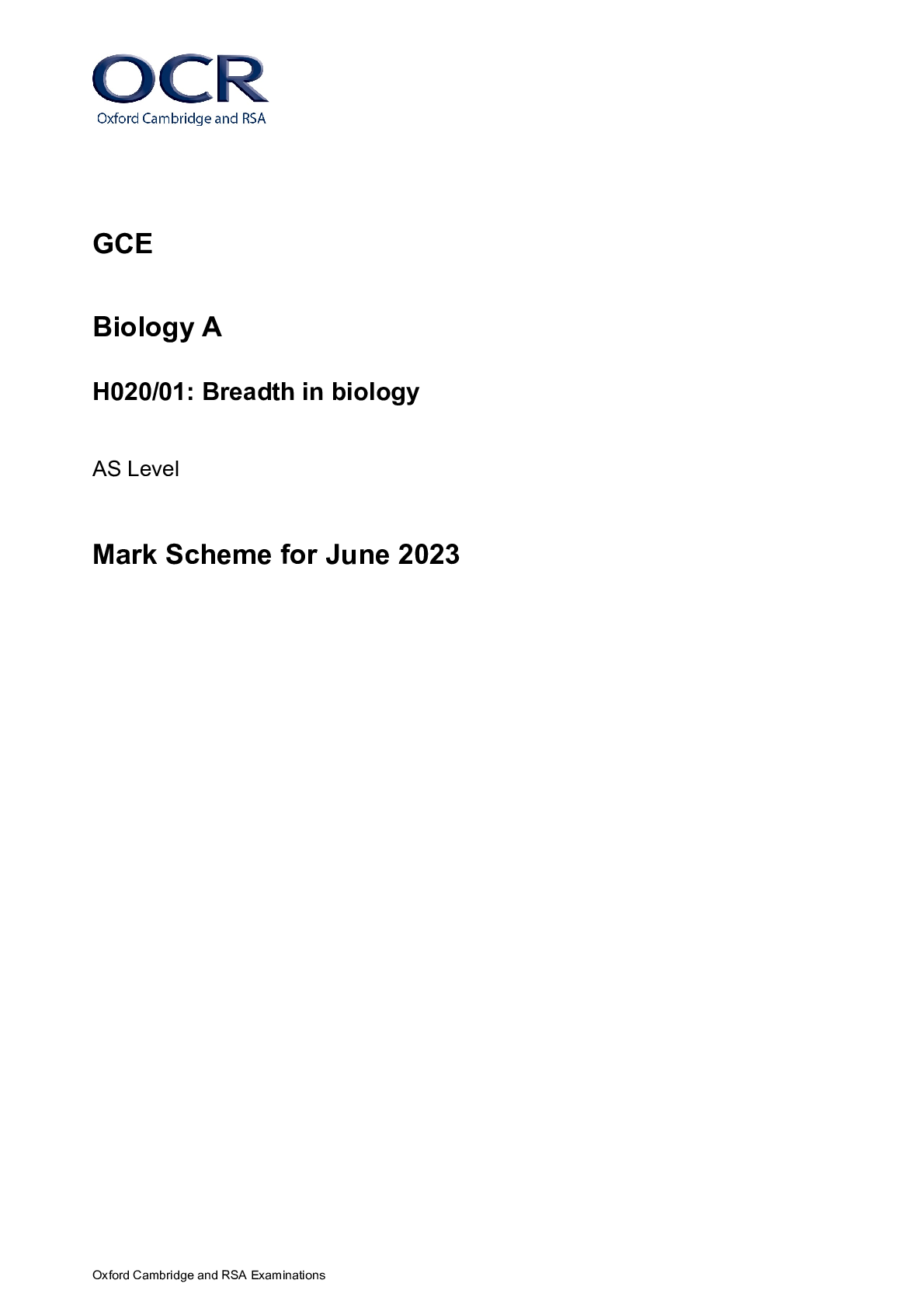Religious Studies > MARK SCHEMES > Mark Scheme (Results) Summer 2022 Pearson Edexcel GCSE In Religious Studies B (1RB0) Paper 1: Area (All)
Mark Scheme (Results) Summer 2022 Pearson Edexcel GCSE In Religious Studies B (1RB0) Paper 1: Area of Study 1 – Religion and Ethics Option 1D: Buddhism Edexcel and BTEC Qualifications
Document Content and Description Below
Mark Scheme (Results) Summer 2022 Pearson Edexcel GCSE In Religious Studies B (1RB0) Paper 1: Area of Study 1 – Religion and Ethics Option 1D: Buddhism Edexcel and BTEC Qualifications Edexce ... l and BTEC qualifications are awarded by Pearson, the UK’s largest awarding body. We provide a wide range of qualifications including academic, vocational, occupational and specific programmes for employers. For further information visit our qualifications websites at www.edexcel.com or www.btec.co.uk. Alternatively, you can get in touch with us using the details on our contact us page at www.edexcel.com/contactus. Pearson: helping people progress, everywhere Pearson aspires to be the world’s leading learning company. Our aim is to help everyone progress in their lives through education. We believe in every kind of learning, for all kinds of people, wherever they are in the world. We’ve been involved in education for over 150 years, and by working across 70 countries, in 100 languages, we have built an international reputation for our commitment to high standards and raising achievement through innovation in education. Find out more about how we can help you and your students at: www.pearson.com/uk Summer 2022 Question Paper Log Number P71248A Publications Code 1RB0_1D_2206_MS All the material in this publication is copyright © Pearson Education Ltd 2022 General Marking Guidance • All candidates must receive the same treatment. Examiners must mark the first candidate in exactly the same way as they mark the last. • Mark schemes should be applied positively. Candidates must be rewarded for what they have shown they can do rather than penalised for omissions. • Examiners should mark according to the mark scheme not according to their perception of where the grade boundaries may lie. • There is no ceiling on achievement. All marks on the mark scheme should be used appropriately. • All the marks on the mark scheme are designed to be awarded. Examiners should always award full marks if deserved, i.e. if the answer matches the mark scheme. Examiners should also be prepared to award zero marks if the candidate’s response is not worthy of credit according to the mark scheme. • Where some judgement is required, mark schemes will provide the principles by which marks will be awarded and exemplification may be limited. • When examiners are in doubt regarding the application of the mark scheme to a candidate’s response, the team leader must be consulted. • Crossed out work should be marked UNLESS the candidate has replaced it with an alternative response. Question number Answer Reject Mark 1(a) AO1 3 marks Award one mark for each point identified up to a maximum of three. • The Five Precepts are five things a Buddhist should avoid (1) • In their positive form they list the qualities a person should develop (1) • They are also known as pancha sila (1) • They help Buddhists to overcome the Three Poisons (1) • They are not commanded but suggested (1). Accept any other valid response. • Lists (maximum of one mark) (3) Question number Answer Reject Mark 1(b) AO1 4 marks Award one mark for providing a belief. Award a second mark for development of the belief. Up to a maximum of four. • The Wheel of Life represents the cycle of samsara (1) and the idea that people can escape it (1) • Each part of the wheel represents a particular feature of life (1) and how these are connected to each other (1) • It shows the significance suffering has on people (1). The Three Poisons are represented at the centre of the wheel (1). Accept any other valid response. • Repeated belief/development • Development that does not relate both to the belief given and to the question. (4) Question number Answer Reject Mark 1(c) AO1 5 marks Award one mark for each reason. Award further marks for each development of the reason up to a maximum of four marks. Award one further mark for any relevant source of wisdom or authority. • Anicca is one of the Three Marks of Existence (1), it highlights that the soul is not fixed and is always changing (1) as shown in the story of Nagasena and the Chariot (Milinda Panha) (1) • Impermanence infuses all aspects of life (1), it is a continual reminder of the frailty of human beings (1) ‘”All conditioned things are impermanent” – when one see this with wisdom, one turns away from suffering’ (Maggavagga 277) (1) • It is a teaching of the Buddha so must be important to Buddhists (1). The Buddha taught that attaining Nibbana is the only way to escape anicca (1). The Buddha's final words ‘Decay or anicca is inherent in all component things, work out your own salvation with diligence’ (Maha-paranibbana) (1). Accept any other valid response. • Repeated reason/ development • Development that does not relate both to the reason and to the question • Reference to a source of wisdom that does not relate to the reason given. (5) Question number Indicative content Mark 1(d) AO2 12 marks, SPaG 3 marks Candidates must underpin their analysis and evaluation with knowledge and understanding. Candidates will be required to demonstrate thorough knowledge and understanding as well as accuracy of religion and belief when responding to the question and in meeting AO2 descriptors. AO2 Arguments for the statement: • The Buddha himself accepted the rapidly growing nature of desire, once saying that all occurrences are rooted in desire. He explained to his followers ‘The Dhamma-wheel is set in motion in the instant Koṇḍañña sees the realities pointed out by the Buddha’ (Dhammacakkappavattana Sutta) • Within all human beings is the desire for happiness, which leads to want, which is another desire. This want helps a person overcome feelings of limitation which is part of human nature • For Buddhists the only thing not rooted in desire is Nibbana, for it is the end of all phenomena. The desire to seek enlightenment is not wrong and does not need to be overcome. Arguments against the statement: • Buddhists believe that it is possible to overcome desire and this can be done by achieving enlightenment; they seek to attain it through their spiritual life. If it was possible for the Buddha it is possible for all Buddhists • The Buddha spoke of ending pain resulting from desire ‘for the spiritually ennobled ones, is the true reality which is the way leading to the cessation of pain’ (Dhammacakkappavattana Sutta) • By following the Eightfold Path, Buddhists believe they can free themselves from desire and break the cycle of Samsara. This is a spiritual aim of Buddhism. Accept any other valid response. Candidates who do not consider different viewpoints within the religious tradition or non-religious viewpoints (as instructed in the question) cannot achieve marks beyond Level 2. (15) Level Mark Descriptor 0 No rewardable response. Level 1 1–3 • Information/issues are identified and make superficial connections among a limited range of elements in the question, underpinned by isolated elements of understanding of religion and belief. • Judgements are supported by generic arguments to produce a conclusion that is not fully justified. Level 2 4–6 • Superficial connections are made among many, but not all, of the elements in the question, underpinned by a limited understanding of religion and belief. • Judgements of a limited range of elements in the question are made. Judgements are supported by an attempt to appraise evidence, much of which may be superficial, leading to a conclusion that is not fully justified. Level 3 7–9 • Deconstructs religious information/issues, leading to coherent and logical chains of reasoning that consider different viewpoints. These are underpinned by an accurate understanding of religion and belief. Connections are made among many, but not all, of the elements in the question. • Constructs coherent and reasoned judgements of many, but not all, of the elements in the question. Judgements are supported by the appraisal of evidence, some of which may be superficial, leading to a partially justified conclusion. Level 4 10–12 • Critically deconstructs religious information/issues, leading to coherent and logical chains of reasoning that consider different viewpoints. These are underpinned by a sustained, accurate and thorough understanding of religion and belief. Connections are made among the full range of elements in the question. • Constructs coherent and reasoned judgements of the full range of elements in the question. Judgements are fully supported by the comprehensive appraisal of evidence, leading to a fully justified conclusion. SPaG Marks Descriptors 0 marks No marks awarded • The candidate writes nothing • The candidate’s response does not relate to the question. • The candidate’s achievement in SPaG does not reach the threshold performance level, for example errors in spelling, punctuation and grammar severely hinder meaning. 1 mark Threshold performance • Candidates spell and punctuate with reasonable accuracy. • Candidates use rules of grammar with some control of meaning and any errors do not significantly hinder meaning overall. • Candidates use a limited range of specialist terms as appropriate. 2 marks Intermediate performance • Candidates spell and punctuate with considerable accuracy. • Candidates use rules of grammar with general control of meaning overall. • Candidates use a good range of specialist terms as appropriate. 3 marks High performance • Candidates spell and punctuate with consistent accuracy. • Candidates use rules of grammar with effective control of meaning overall. • Candidates use a wide range of specialist terms as appropriate. Question number Answer Reject Mark 2(a) AO1 3 marks Award one mark for each point identified up to a maximum of three. • Buddhists do not consider marriage to be a religious commitment (1) • Buddhists may believe that marriage is important for offering stability to a family (1) • Buddhists may view marriage as important to avoid the suffering of loneliness (1) • Buddhism recognises that marriage may help to prevent sexual misconduct (1) • Marriage may help to release selfishness (1). Accept any other valid response. • Lists (maximum of one mark) (3) Question number Answer Reject Mark 2(b) AO1 4 marks Award one mark for providing a way. Award a second mark for development of the way. Up to a maximum of four. • The sangha provides opportunities for families to worship together (1) to ensure Buddhism is at the heart of the family (1) • It brings people together to celebrate rites of passage and festivals (1) helping families have a shared experience of Buddhism (1) • It supports couples experiencing difficulties in their marriage (1) which can help prevent family breakdown (1). • Repeated way/development • Development that does not relate both to the way given and to the question. (4) Accept any other valid response. Question number Answer Reject Mark 2(c) AO1 5 marks Award one mark for each teaching. Award further marks for each development of the teaching up to a maximum of four marks. Award one further mark for any relevant source of wisdom or authority. • The Buddha taught that gender should not set people apart (1) it is a person’s actions that set them apart (1) ‘What difference does being a woman make when the mind's well-centered, when knowledge is progressing, seeing clearly, rightly, into the Dhamma’ (Soma Sutta 5:2) (1) • Buddhism teaches that there is no fundamental difference between all human beings (1) so it regards men and women as equally valued (1) ‘All those who take refuge in the Buddha, Dhamma, and Sangha become members of the Buddha's four-fold assembly of followers: monks, nuns, male lay devotees, and female lay devotees’ (Thanissaro Bhikkhu, Refuge, An Introduction to the Buddha, Dhamma, & Sangha) (1) • Discrimination causes people to suffer (1), to cause this can lead to negative kamma (1). ‘We consider that the purpose of life is to develop compassion for all living beings without discrimination and to work for their good, happiness, and peace’ (The World Buddhist Sangha Council 1966) (1). Accept any other valid response. • Repeated teaching/ development • Development that does not relat [Show More]
Last updated: 2 years ago
Preview 1 out of 21 pages
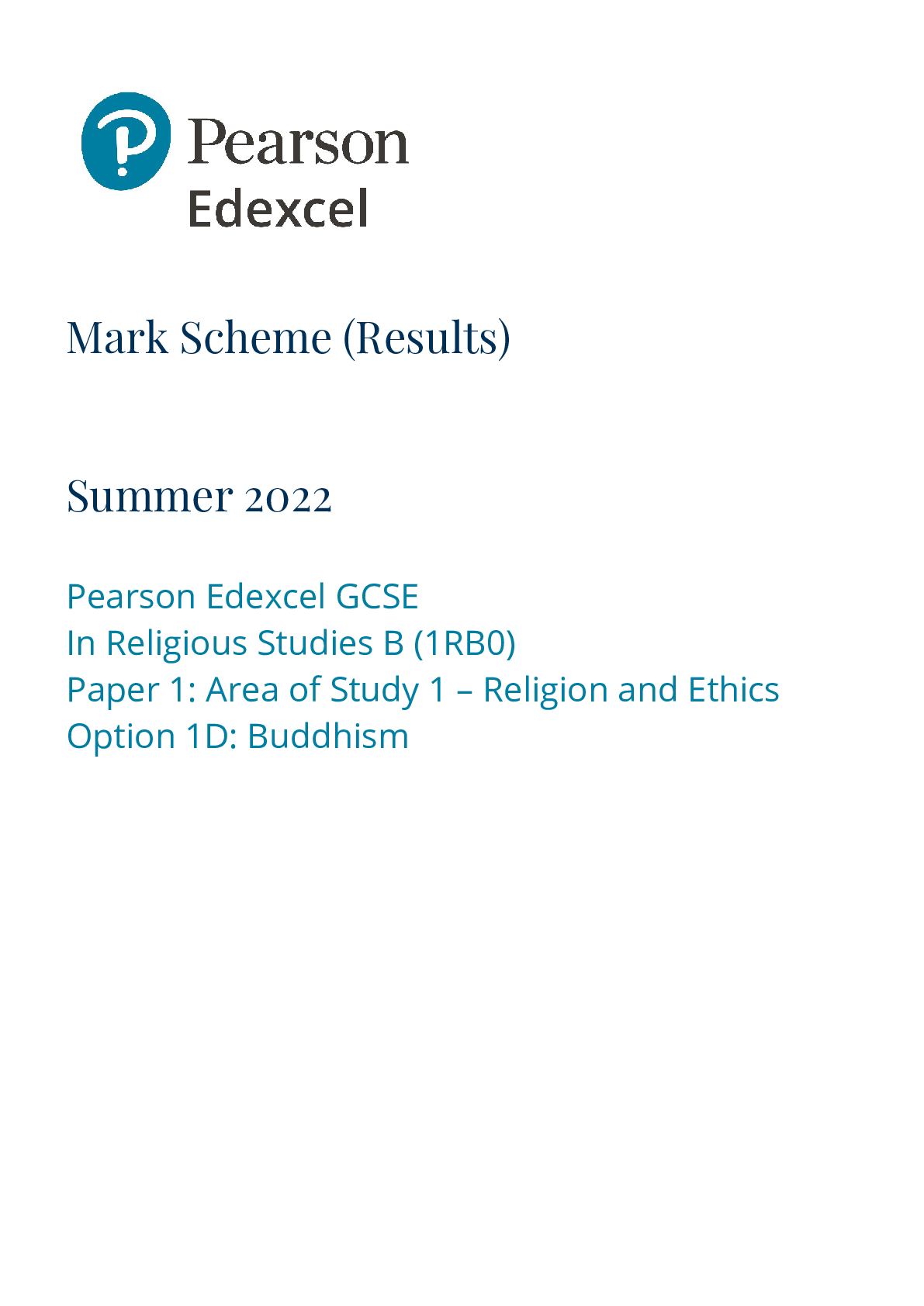
Buy this document to get the full access instantly
Instant Download Access after purchase
Buy NowInstant download
We Accept:

Reviews( 0 )
$8.00
Can't find what you want? Try our AI powered Search
Document information
Connected school, study & course
About the document
Uploaded On
Apr 03, 2023
Number of pages
21
Written in
All
Additional information
This document has been written for:
Uploaded
Apr 03, 2023
Downloads
0
Views
165

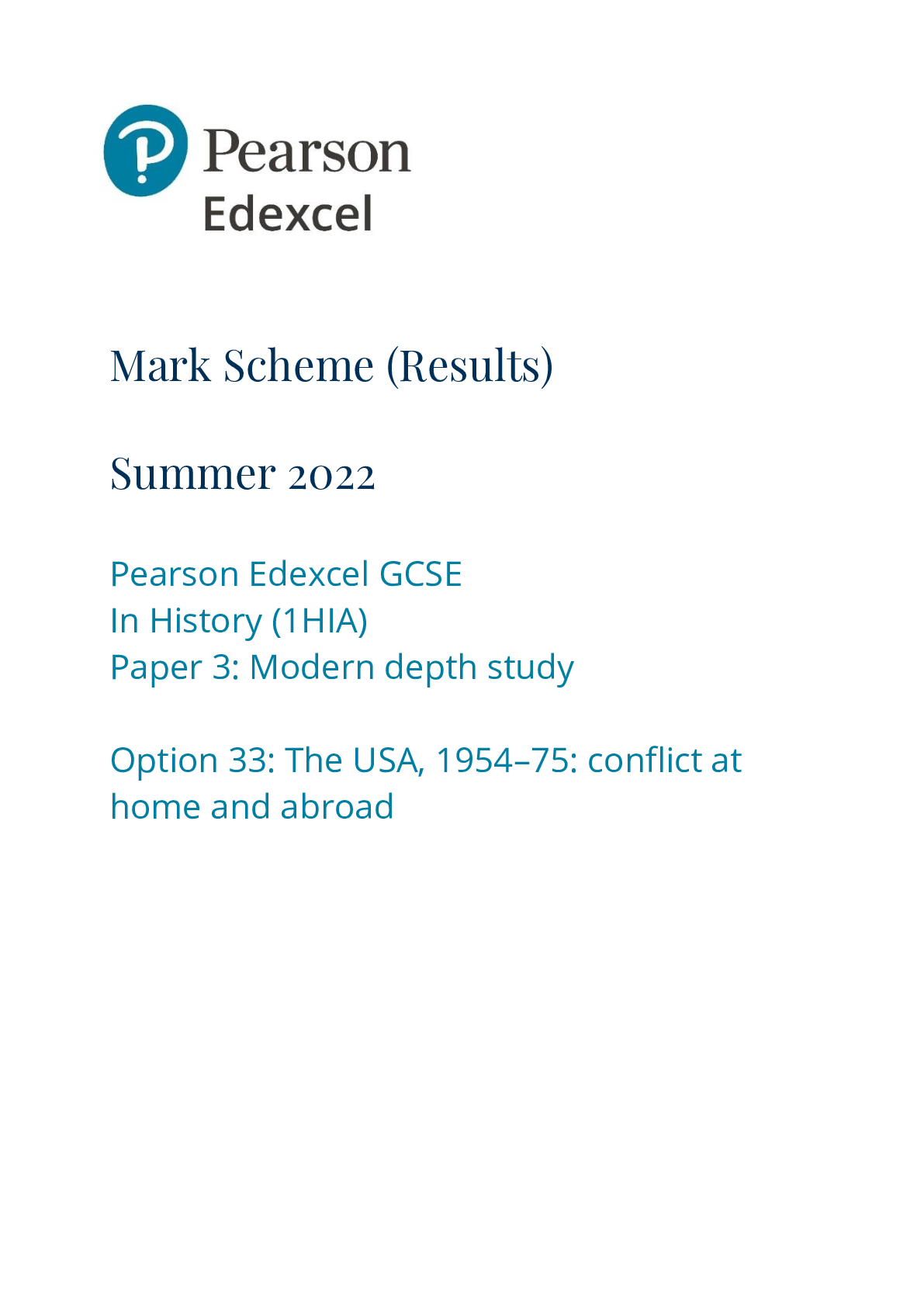
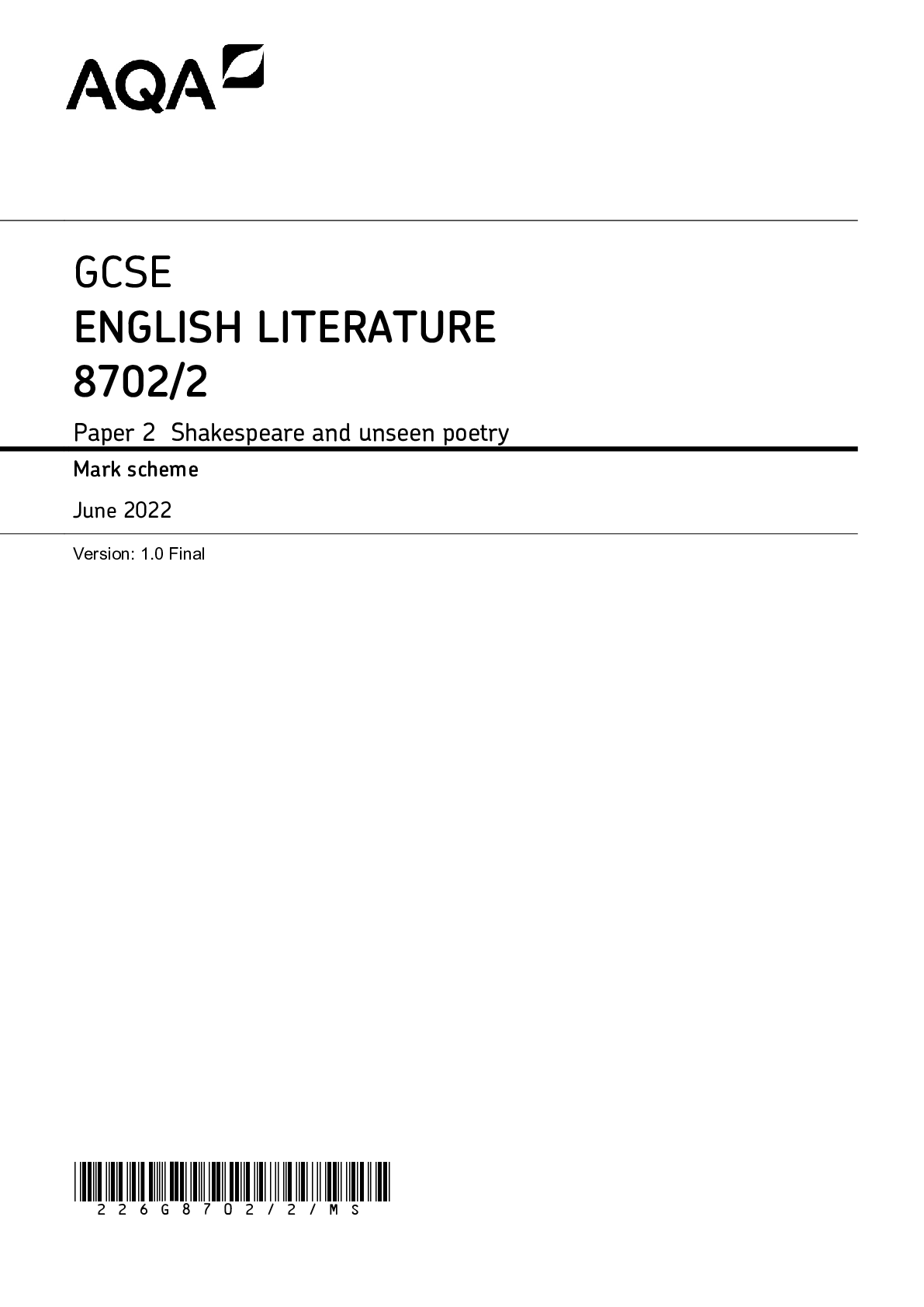
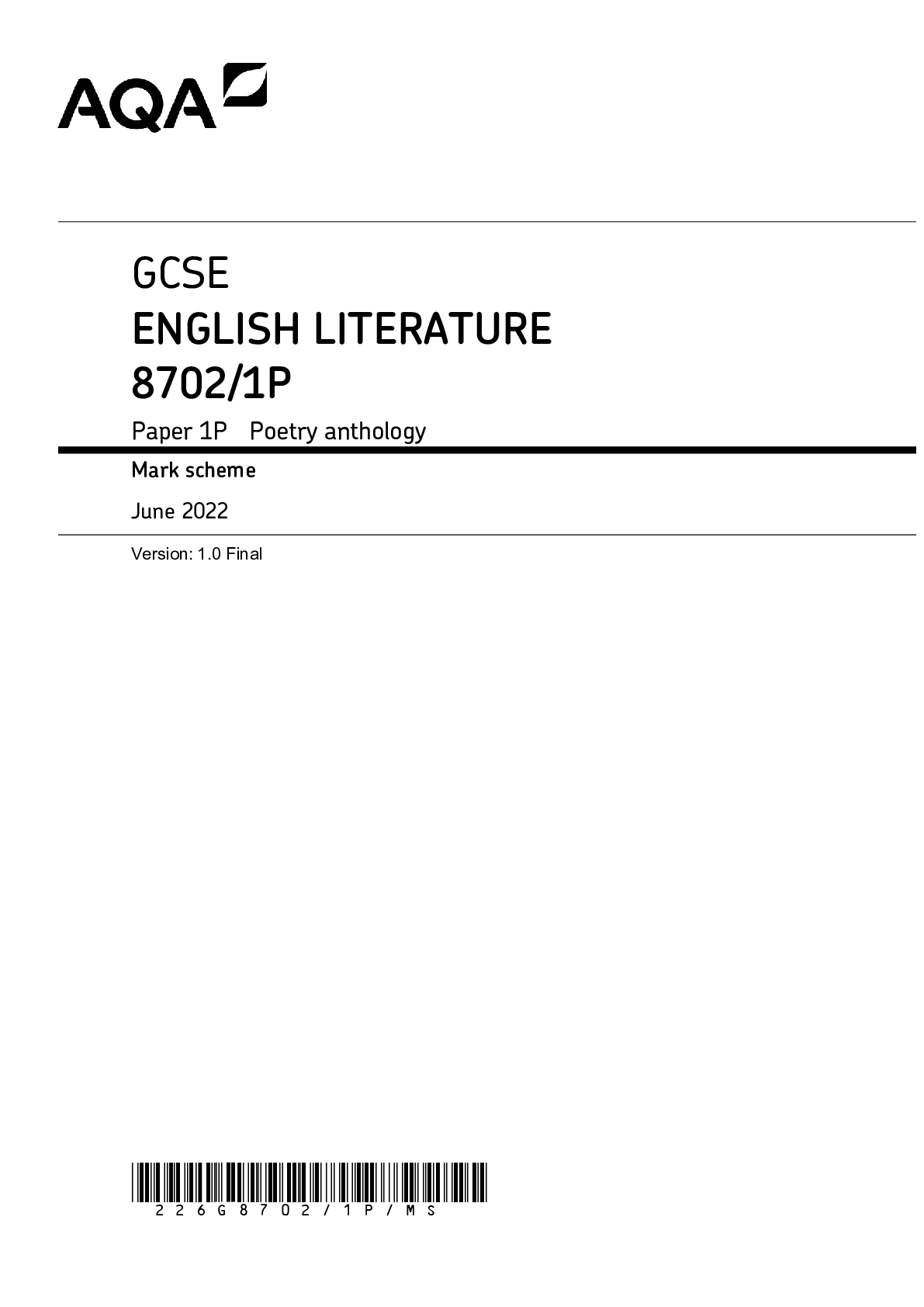

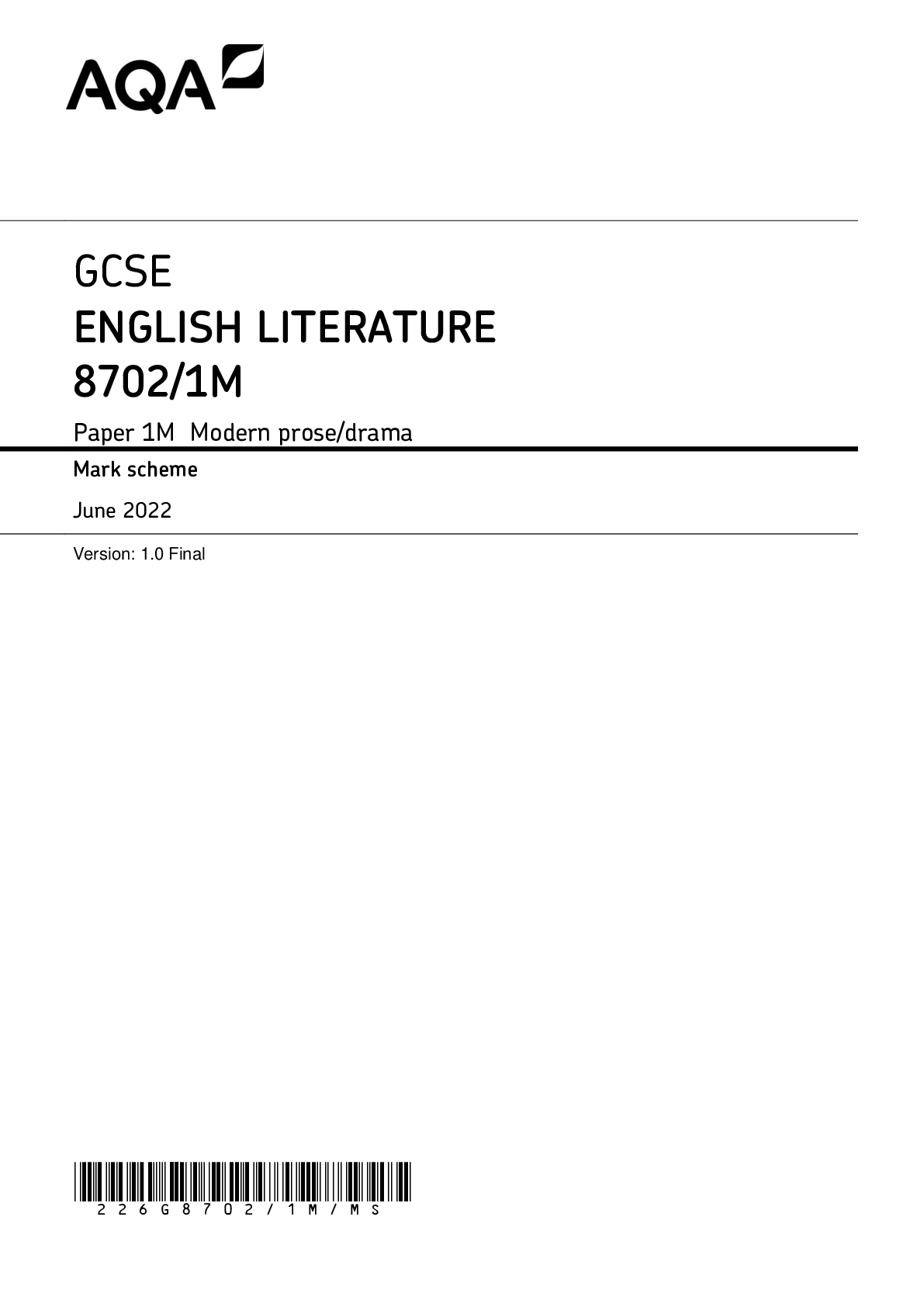
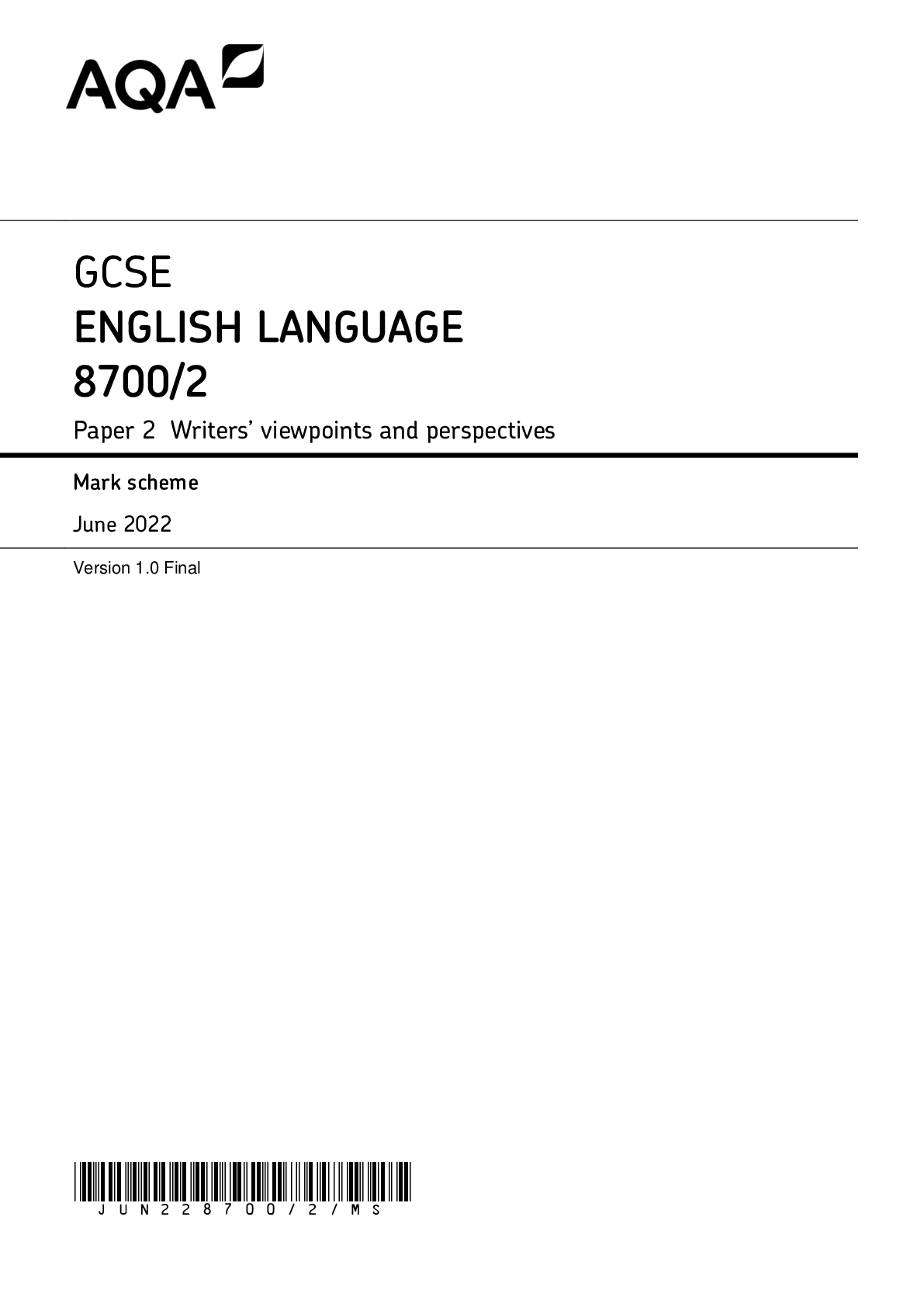
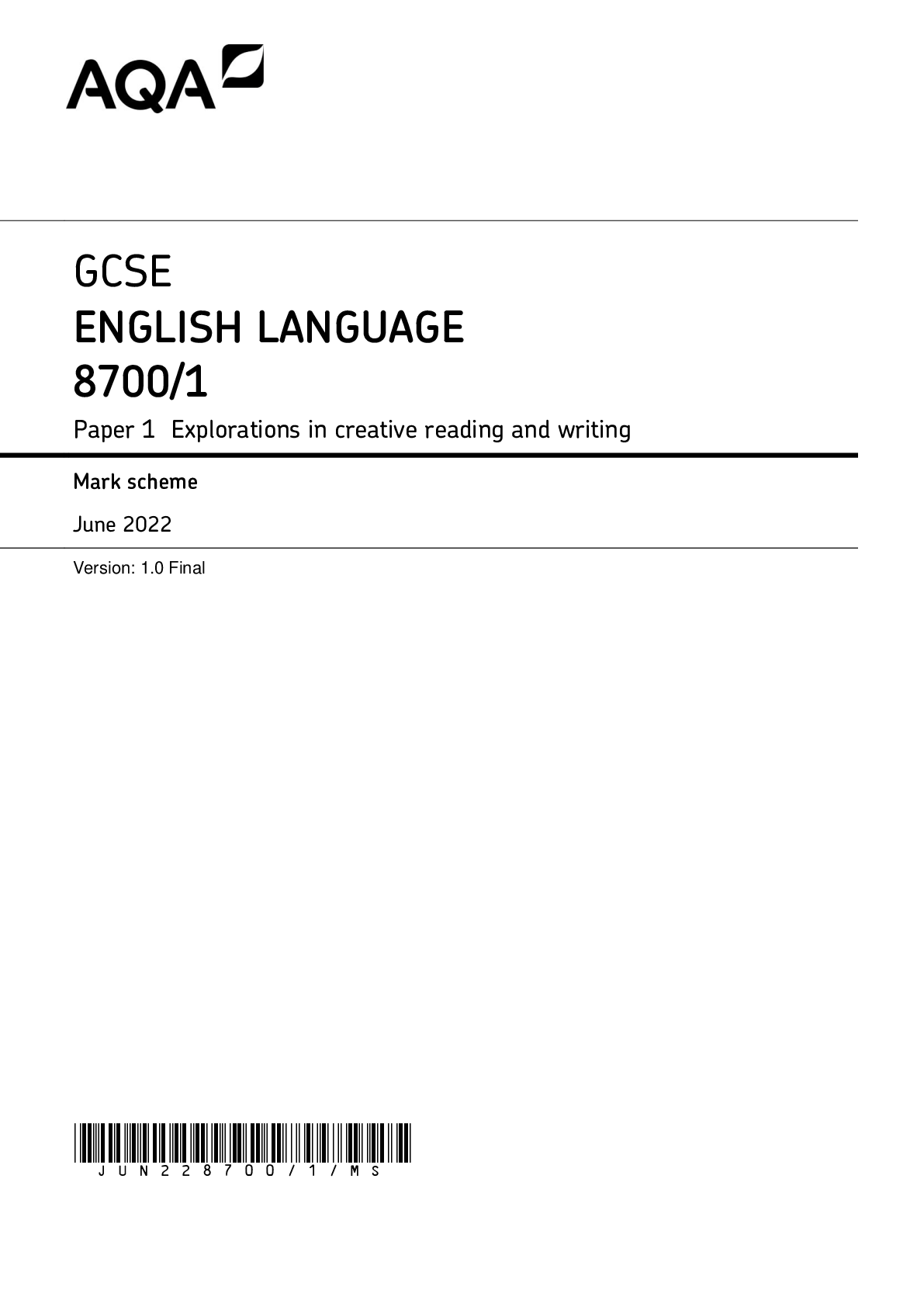
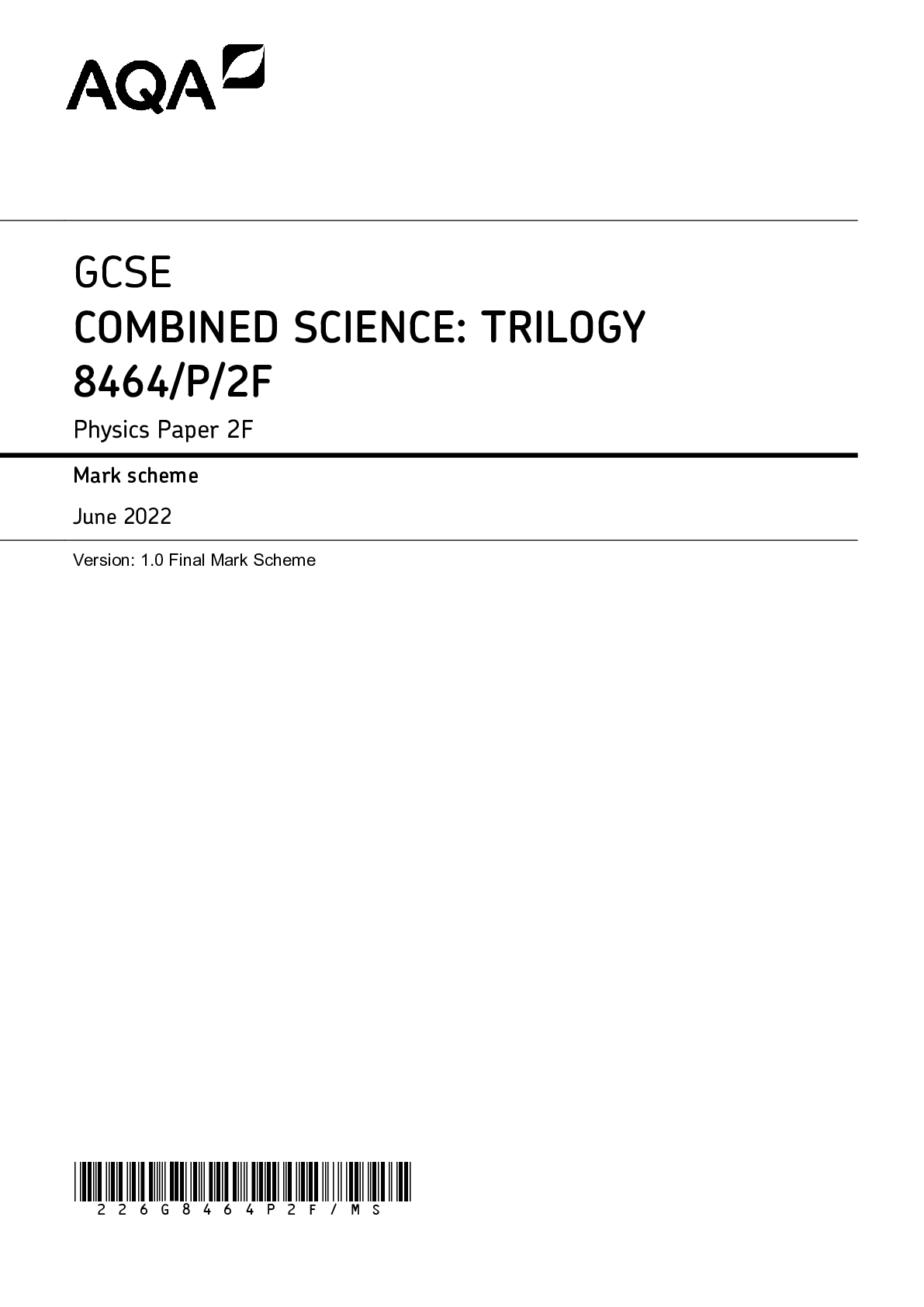
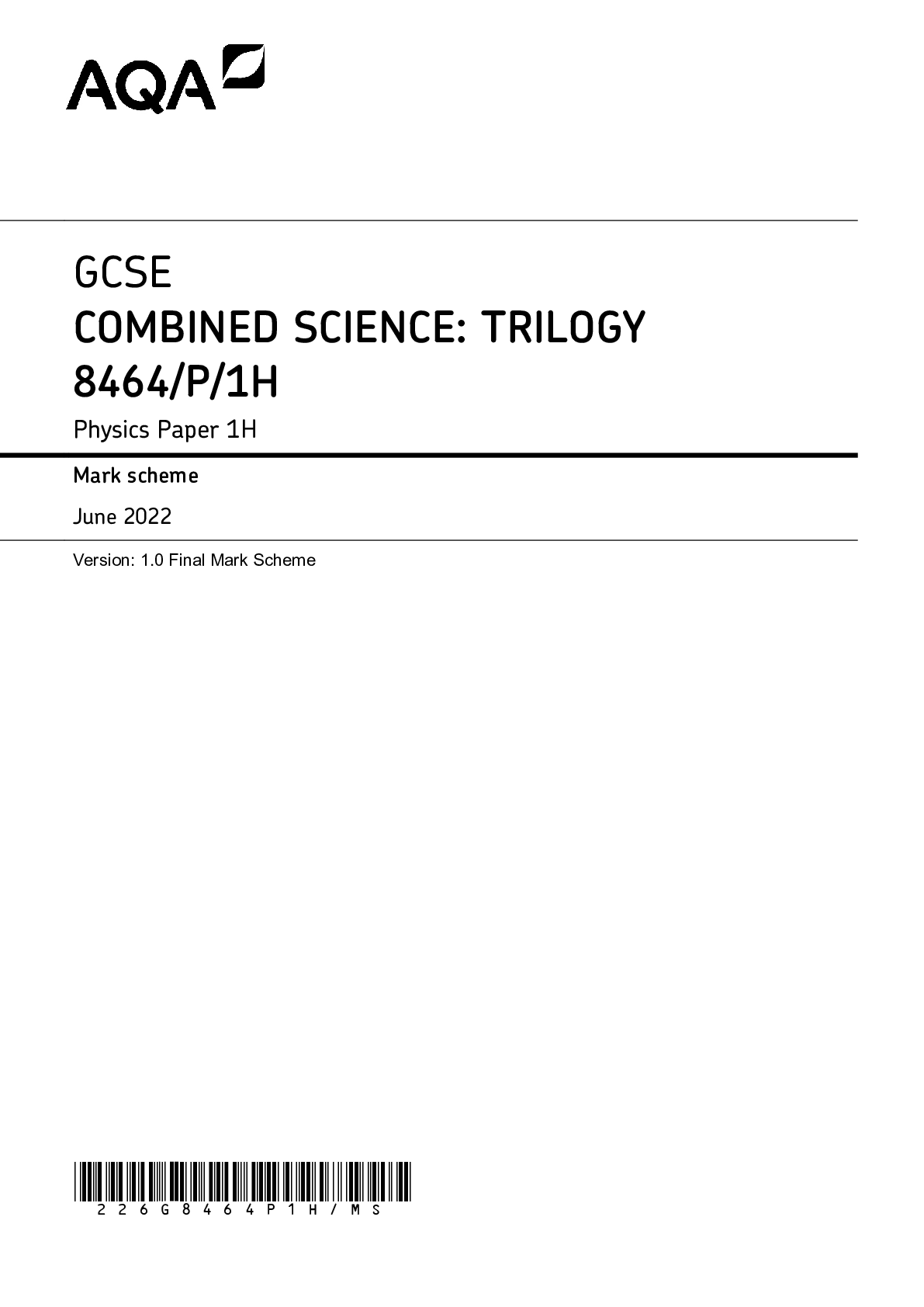
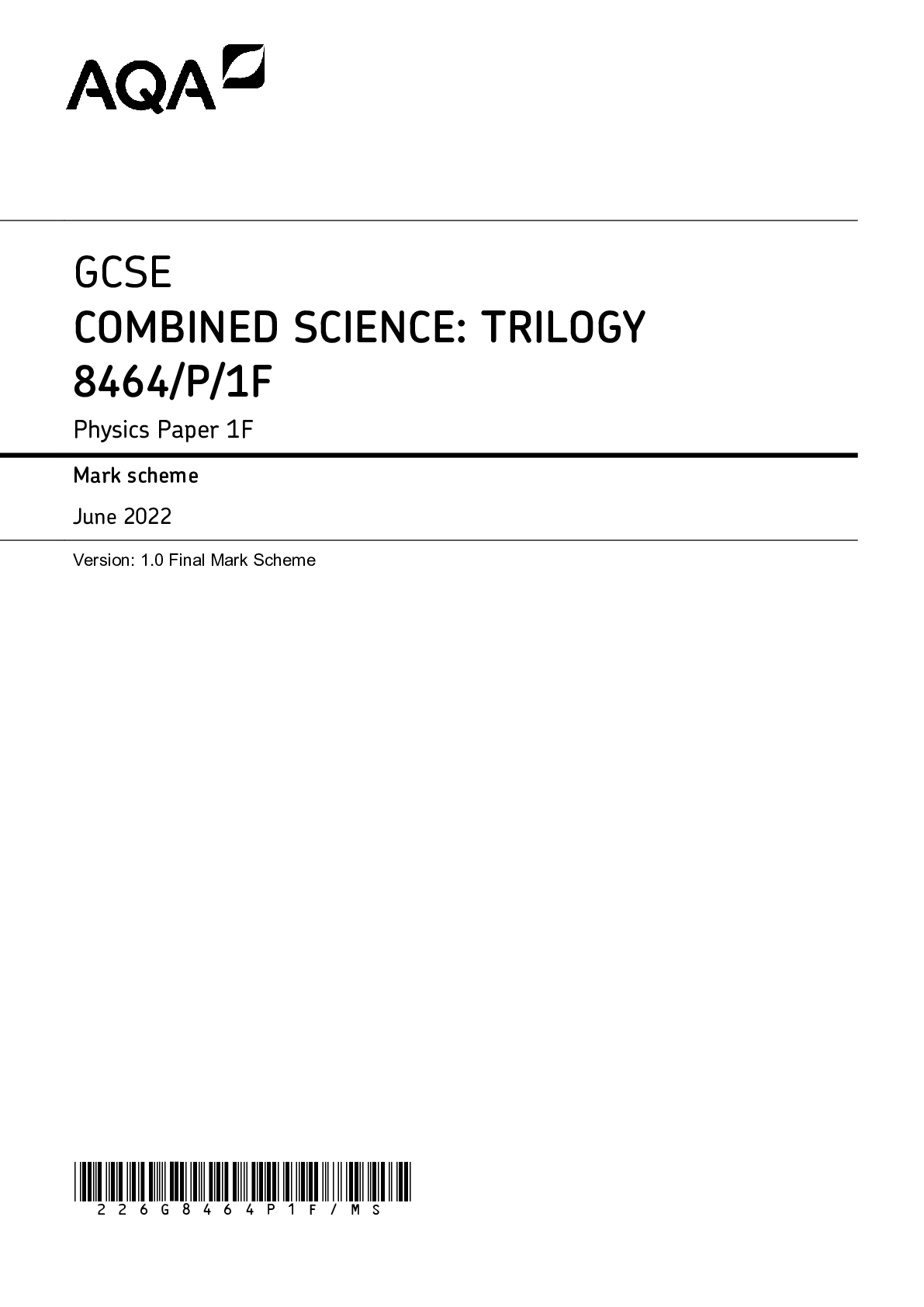
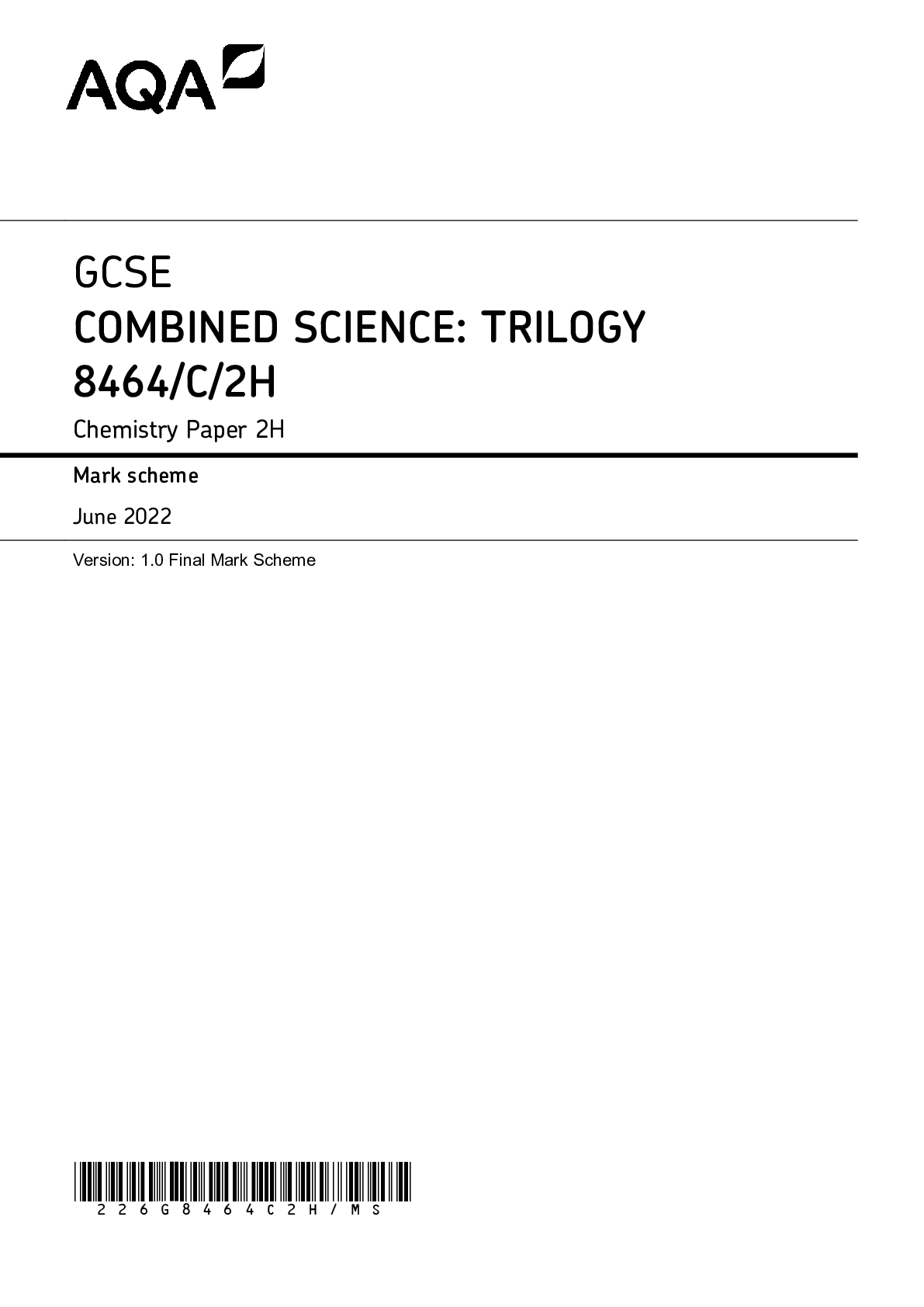



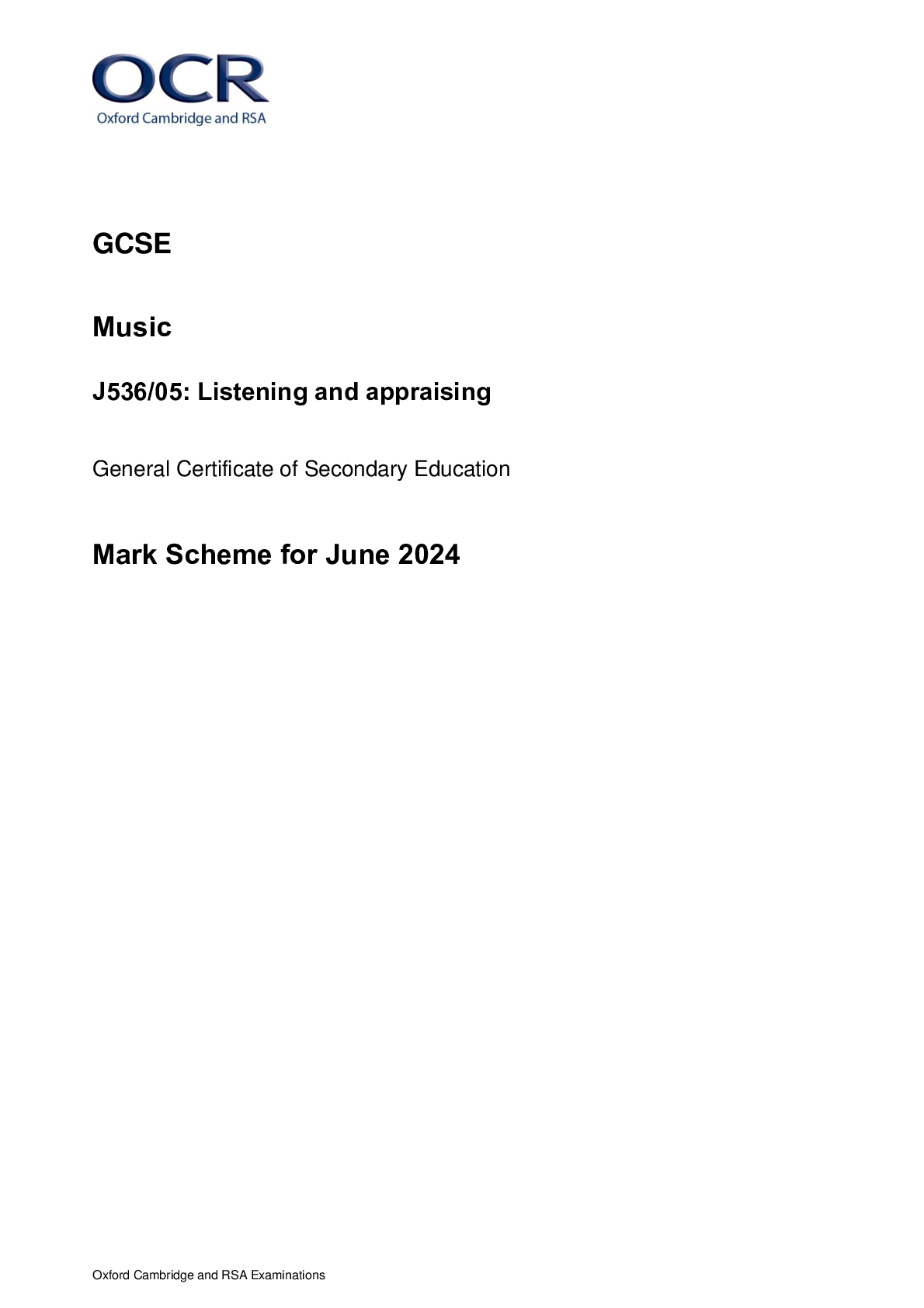

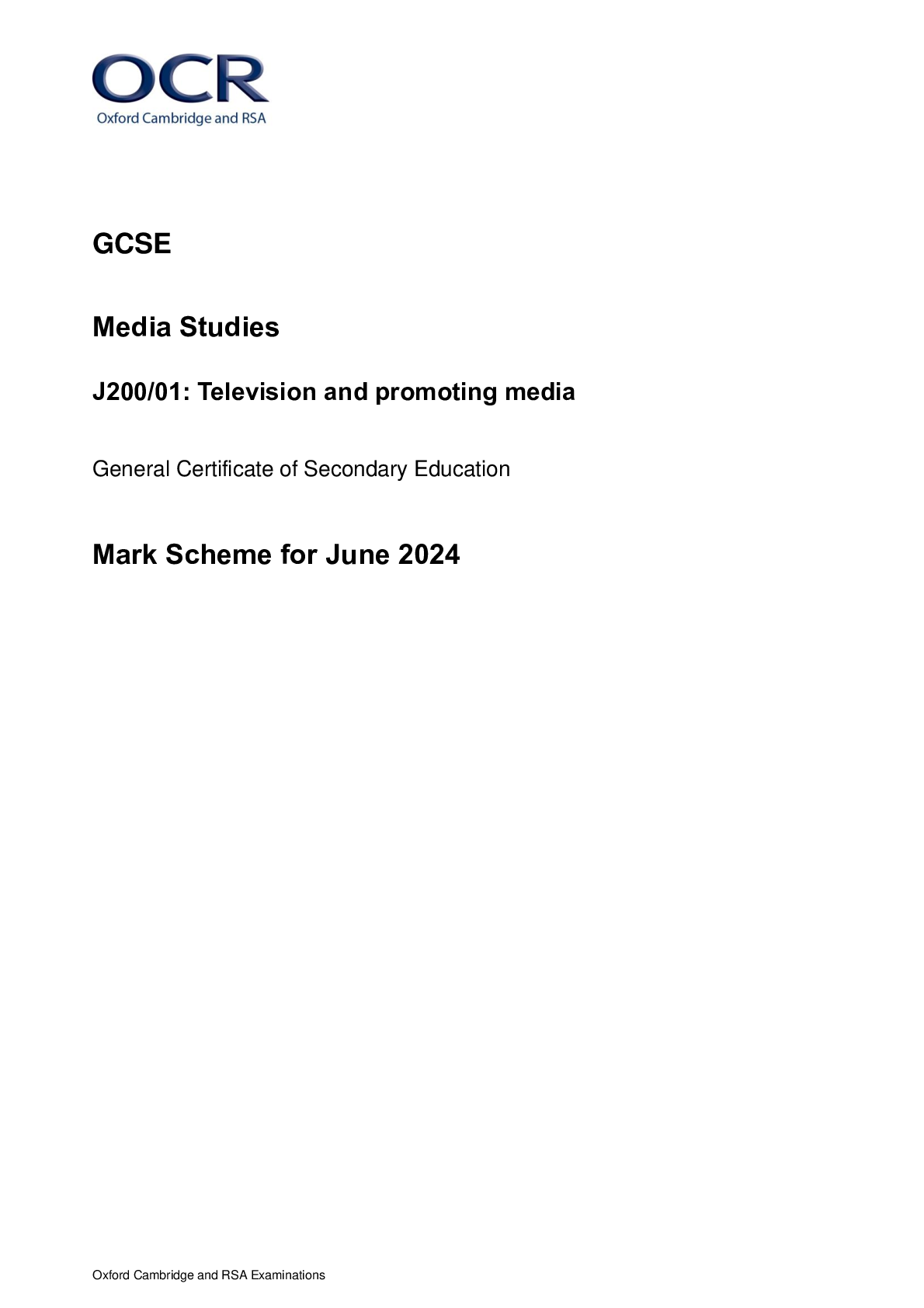
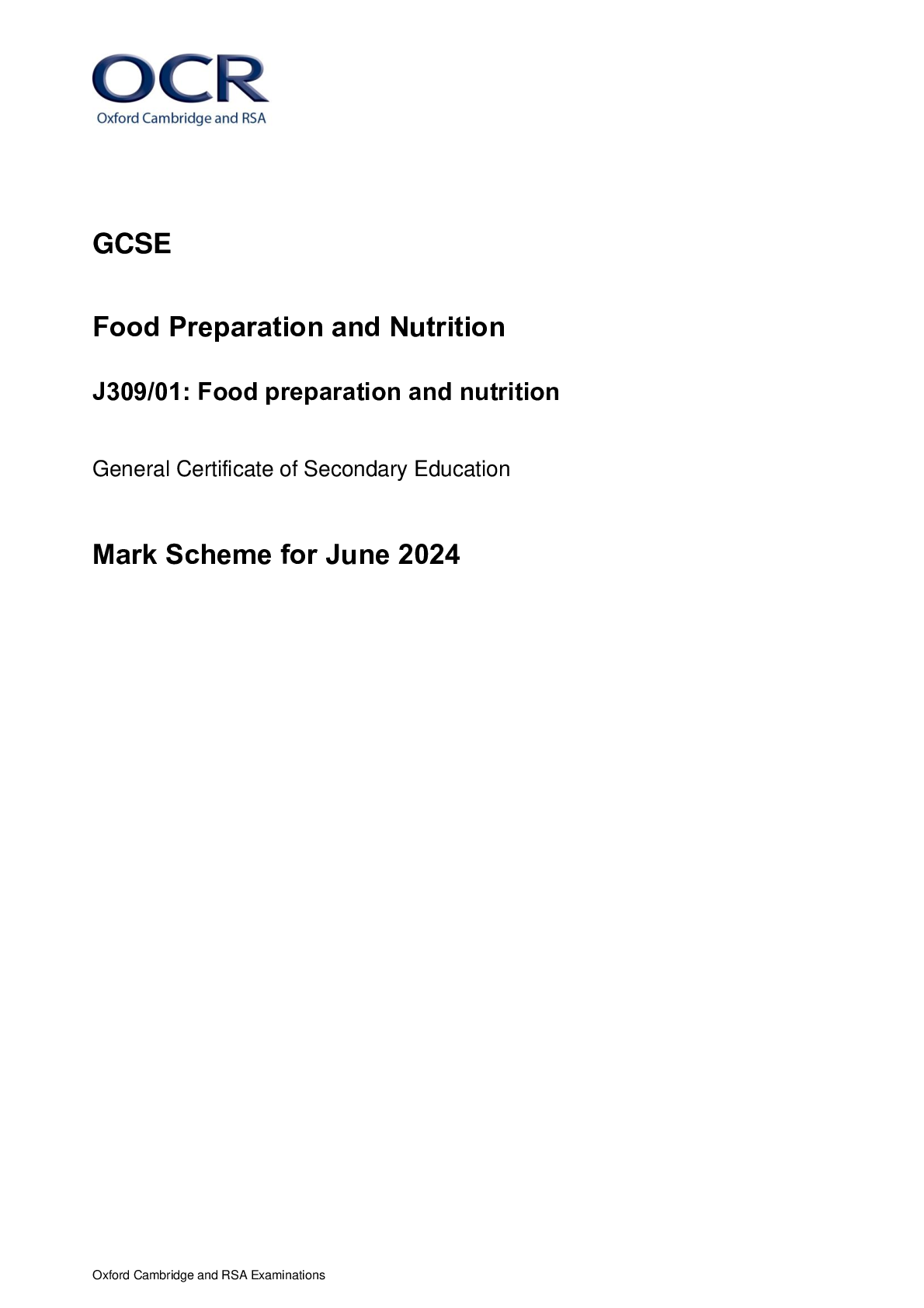
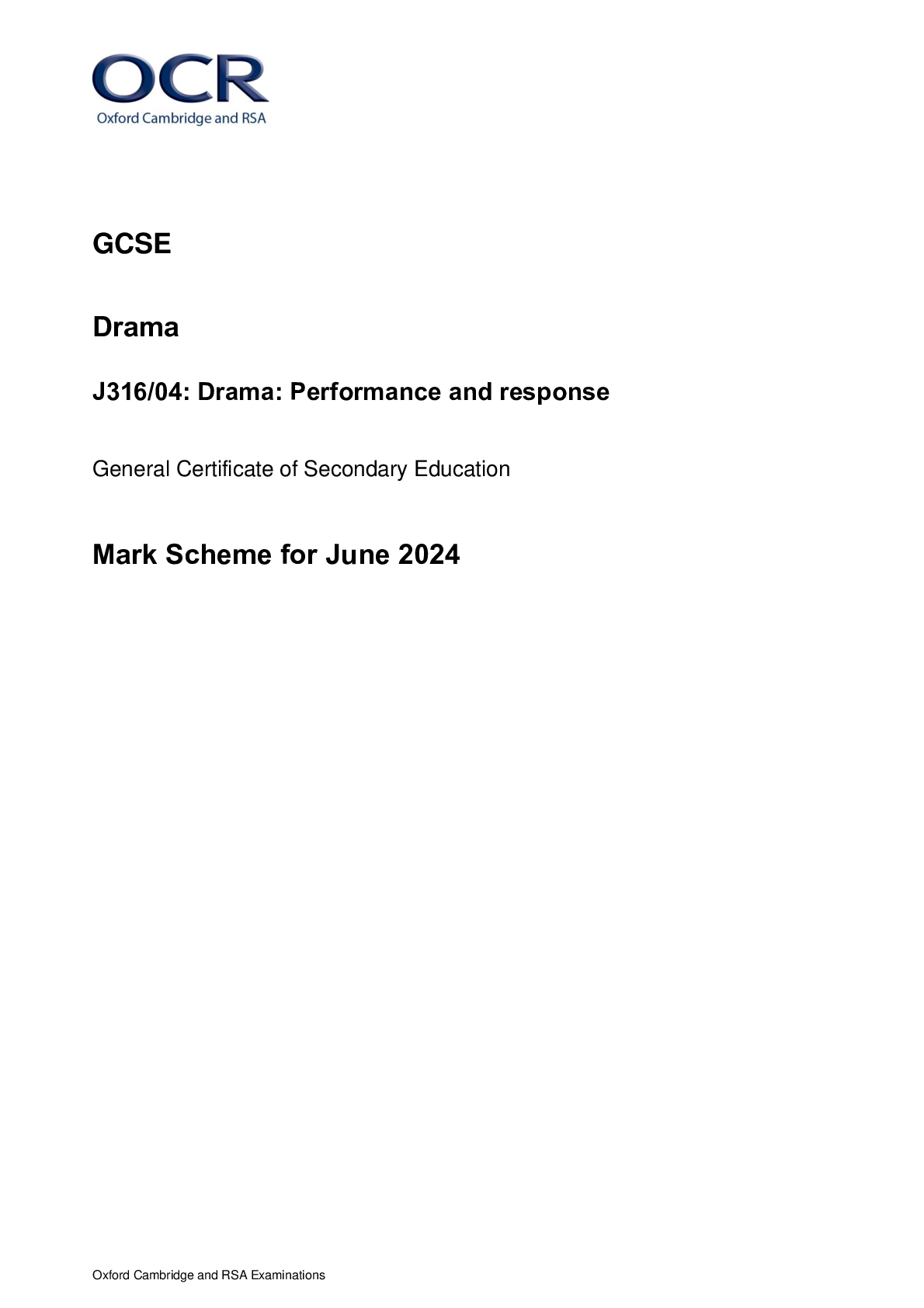
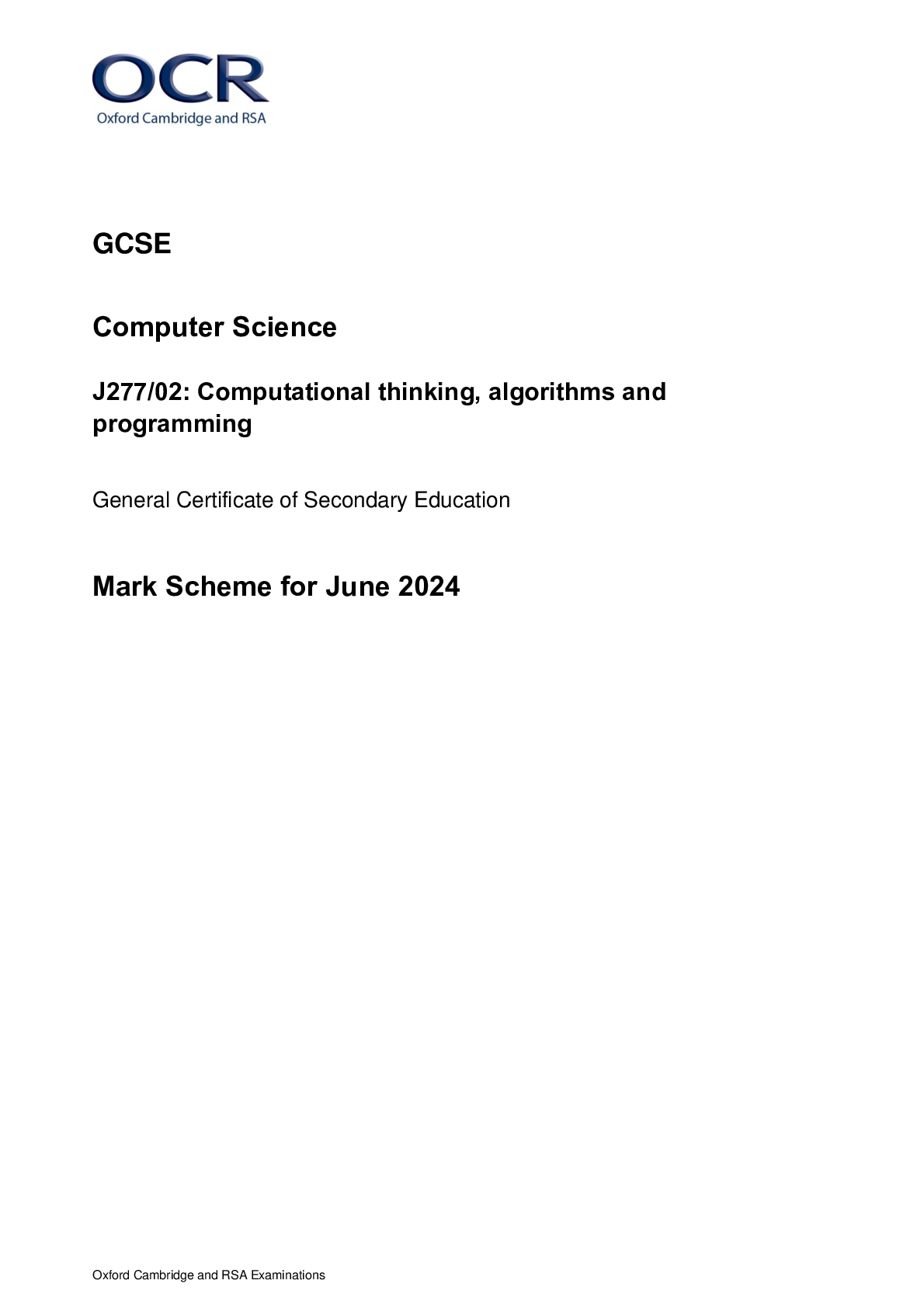
.png)

